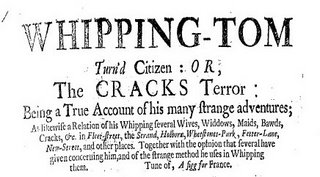
1st voice Humour, say, what makest thou here
In the presence of a queen?
2nd voice Princes hold conceit most dear,
All conceit in humour seen.
1st voice Thou art a heavy, leaden mood –
2nd voice Humour is Invention’s food.
Both But never Humour yet was true,
But that which only pleaseth you.
1st voice O, I am as heavy as lead,
Say then who is Humour now?
2nd voice I am now inclined to mirth,
Humour I as well as thou.
1st voice Why then 'tis I am drowned in woe.
2nd voice No no Wit is cherished so.
Both But never Humour yet was true,
But that which only pleaseth you.
1st voice Mirth then is drown’d in Sorrow’s brim,
O, in sorrow all things sleep.
2nd voice No, no Fool, the light’st things swim
Heavy things sink to the deep.
1st voice In her presence all things smile,
2nd voice Humour frolic then awhile.
Both But never Humour yet was true,
But that which only pleaseth you.
The closing sung dialogue in John Dowland’s Second Booke of Songs (1600). I have ventured to post an mp3 of this delightful piece on my academic web space, for purposes of comment only. I will take down this posting should objection be made:
http://personal.rhul.ac.uk/uhle/001/Humour%20%20say.mp3
“There can be little doubt that the song was written for a masque”, says Diana Poulton, in her study, John Dowland (1972). The musicologist’s curt comment may be right. The dialogue is complete, its little drama resolved within its three stanzas, but a masque ‘entry’ could be short and complete in itself. But I would rather see it as more properly a moment of courtly entertainment, to be staged as if impromptu. The Queen is going to take her exercise in a long gallery. She comes across a man in black, absorbed in thought (I’ve supplied a detail of Jan de Heem’s ‘A Student in his Study’ 1628, which, appropriately, is in the Ashmolean Museum,
The Queen, whose purse was just as impenetrable as a more famous part of her person, no doubt expressed some general pleasure, and passed on in maiden meditation, fancy free, leaving her nation’s greatest melancholy artist (‘Semper Dowland, semper dolans’) unrewarded. That she had just heard something that sounds like a stray part of Cosi fan Tutti miraculously wafted into the wrong century would have been neither here nor there.
The text set might have been Dowland’s own, as he clearly wrote words for his own music. Published in 1600, the ayre must have been written during the vogue for ‘Humour’ pushed by Jonson and Chapman from 1597. Jonson himself might have written the words, as he was proprietorial about 'Humour'. The Entertainment he wrote for King James and Queen Anne at Althorpe in 1603 is another carefully staged and very flattering courtly impromptu (‘The invention was, to have a Satyre lodged in a little Spinney, by which her Majestie, and the Prince were to come, who (at the report of certayne Cornets that were divided in severall places of the Parke, to signifie her approach) advanced his head above the top of the wood, wondring, and (with his pipe in his hand) began as followeth. Satyre: ‘Here? there? and every where? / Some solemnities are neere…’) with elaborate music: “whilst to the sound of excellent soft Musique, that was there concealed in the thicket…”
Sir John Davies’s A Lottery Presented before the late Queene's Majesty at the Lord Chancelor's House, 1601 gets us even closer to the kind of pleasant surprise poets and musicians tried to contrive to please their ageing Queen:
A Mariner with a box under his arm, containing all the several things following, supposed to come from the Carrick came into the Presence, singing this Song:
Cynthia Queene of Seas and Lands,
That Fortune euery where commands,
Sent forth Fortune to the Sea,
To try her fortune every way…
I haven’t been able to find other personifications of ‘Humour’. There’s something close in a poem by Samuel Rowlands, but the LION database produces no dramatic character simply named ‘Humour’ or ‘Melancholy’. The Consort of Musick's peerless performance is still available if you buy their complete Dowland on CD, there seems to be no separate recording of their Second Booke on the market. I'd include the precise link, but it will be too long to fit this column; easily found anyway on a site like Amazon.









